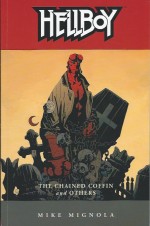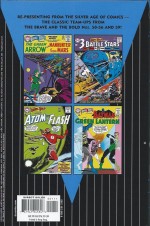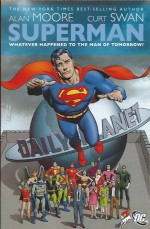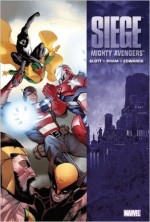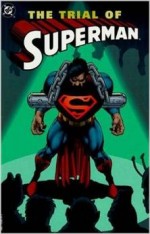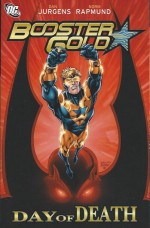
By Scott Gray, Roger Langridge, Todd Dezago, Roger Stern, Craig Rousseau, Matteo Lolli, Lou Kang, John Byrne & various (Marvel)
ISBN: 978-0-7851-4562-3
Since its earliest days Marvel always courted the youngest comicbook consumers. Whether animated tie-ins such as Terrytoons Comics, Mighty Mouse, Super Rabbit Comics, Duckula, assorted Hanna-Barbera and Disney licenses and a myriad of others, or original creations such as Millie the Model, Homer the Happy Ghost, Li’l Kids and Calvin – or as in the 1980s Star Comics line – an entire imprint for originated or licensed comics targeting peewee punters, the House of Ideas has always understood the necessity of cultivating the next generation of readers.
These days, however, general kids’ interest titles are all but dead and, with Marvel characters all over screens large and small, the company usually prefers to create child-friendly versions of its own proprietary pantheon, making that eventual hoped-for transition to more mature comics as painless as possible.
In 2003 the company instituted a Marvel Age line which updated and retold classic original tales by Stan Lee, Jack Kirby & Steve Ditko, mixing it with the remnants of the manga-based Tsunami imprint, all intended for a younger readership.
The experiment was tweaked in 2005, evolving into Marvel Adventures with core titles transformed into Marvel Adventures: Fantastic Four and Marvel Adventures: Spider-Man. The tone was very much that of the company’s burgeoning TV cartoon franchises, in delivery if not name. Additional Marvel Adventures series included Super Heroes, The Avengers and Hulk. These iterations ran until 2010 when they were cancelled and replaced by new volumes of Marvel Adventures: Super Heroes and Marvel Adventures: Spider-Man.
Those tales have all been collected in welcoming digest-sized compilations such as this one which gathers a selection of yarns starring the Sentinel of Liberty. This particular patriotic play-list comprises three all-ages tales – taken from Marvel Adventures Super Heroes #8 and 12, plus an early outing from Marvel Age Spider-Man Team-Up #2 and rounded out with a mainstream continuity yarn from Captain America volume 1 #255 from March 1981.
The Sentinel of Liberty was created by Joe Simon & Jack Kirby at the end of 1940 and launched straight into his own Timely Comics’ (Marvel’s earliest iteration) title. Captain America Comics #1 was cover-dated March 1941 and was a monster smash-hit. Cap was the absolute and undisputed star of Timely’s “Big Three†– the other two being the Human Torch and Sub-Mariner. He was also one of very the first to fall from popularity at the end of the Golden Age.
When the Korean War and Communist aggression dominated the American psyche in the early 1950s Cap was briefly revived – as were his two fellow superstars – in 1953 before sinking once more into obscurity until a resurgent Marvel Comics once more needed them. When the Stars-&-Stripes Centurion finally reappeared he finally found a devoted following who stuck with him through thick and thin.
Soon after taking over the Avengers, he won his own series and, eventually, title. Cap waxed and waned through the most turbulent period of social change in American history but always struggled to find an ideological place and stable footing in the modern world, plagued by the trauma of his greatest failure: the death of his boy partner Bucky…
If you’re of a slavish disposition continuity-wise, the first three Star-Spangled sagas all occur on Marvel’s Earth-20051 whilst the last is situated in the regulation Earth-616.
It opens with an updated origin – in keeping with the later filmic iteration – as ‘The Legend Reborn’ (by Scott Gray & Craig Rousseau as seen in MASH #8, April 2009) sees World War II’s greatest hero decanted from an arctic iceberg by agents of SHIELD.
Future-shocked and mistrusting, Steve Rogers breaks out of protective custody and explores the 21st century beside teen-rebel and street-performer Rick Jones, until secret society Hydra try to “recruit†him and Cap is finally forced to pick a side…
The introductory epic is augmented by an enticing war-time tale. ‘Spy for the Cameras!’ (Roger Langridge & Rousseau) finds Cap and annoyingly plucky reporter Rosalind Hepburn exposing an undercover plot in Hollywoodland…
Issue #12 (August 2009) saw Cap and Rick return in ‘Web of Deceit’ by Gray & Matteo Lolli. Here the time-lost hero is transported into Hydra’s digital domain to face unimaginable and lethally implausible peril, until Rick’s buddies in the Online Brigade log in to save the day…
This is followed by another deliciously wry WWII romp from Langridge & Rousseau, with news-hen Rosalind, Cap and Bucky battling a prototype mutant cyborg in ‘If This Be P.R.O.D.O.K.!’
‘Stars, Stripes and Spiders!’ is by Todd Dezago, Lou Kang & Pat Davidson (originally debuting in Marvel Age Spider-Man Team-Up #2, December 2004 and inspired by Len Wein and Gil Kane’s tale from the original Marvel Team-Up #13).
When a certain wall-crawling high-school student and part-time hero stumbles into Captain America tackling an AIM cadre stealing a super-soldier serum, the nervous lad learns a few things about the hero game from the guy who wrote the book. Not making that lesson any easier is petrifying super-villain the Grey Gargoyle…
Closing out this fast-paced primer of patriotic action is a classic retelling of Cap’s early career by Roger Stern & John Byrne. The story was the finale in a superb run by the duo: a mini-renaissance of well-conceived and perfectly executed yarns epitomising all the fervour and pizzazz of Captain America in his glory days. ‘The Living Legend’ is a moody, rocket-paced origin saga which was the definitive version of the hero’s nativity for decades…
Never the success the company hoped, the Marvel Adventures project was superseded in 2012 by specific comics tied to those Disney XD television shows designated as “Marvel Universe cartoonsâ€, but these collected stories are still an intriguing, amazingly entertaining and superbly accessible means of introducing characters and concepts to kids born sometimes three generations or more away from the originating events.
Beguiling, enthralling and impressive, these riotous super stories are extremely enjoyable yarns, although parents should note that some of the themes and certainly the violence might not be what everybody considers “All-Ages Super Hero Action†and might perhaps better suit older kids…
© 1981, 2000, 2009, 2011 Marvel Characters, Inc. All rights reserved.

